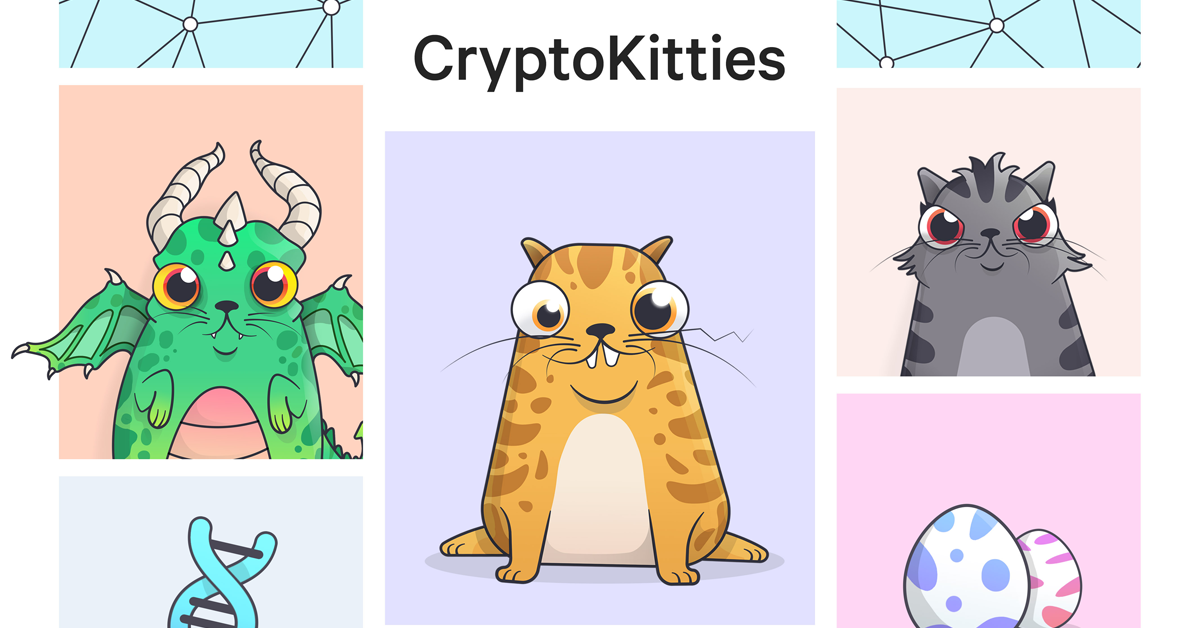Fungible vs. Non-Fungible Tokens: What’s the Difference?
Jack Choros
Content Marketing
In gaining an understanding of the difference between fungible and non-fungible tokens, it’s important to understand the basic properties of what makes something money. Not only does traditional currency as we know it today meet these properties, so do the currencies of both the past and the future. When talking about the future of money, we’re talking about Bitcoin and cryptocurrency of course.
No matter what form money comes in, however, it must maintain the following properties:
- One unit is interchangeable with another. That’s fungibility.
- The money can be divided into smaller units.
- Everyone must be able to use it for transactions.
- The supply must be limited and relatively constant in order to maintain value.
- All versions of the same denomination must maintain the same purchasing power. That’s uniformity.
- The money itself needs to be portable meaning you can carry it around.
- It must be durable enough for repeated use.
Both traditional money and digital currencies meet the above requirements, but it’s the first bullet point in the list that we are going to focus on here.
The Role Of Fungability In Trading Value
Fungibility is great when you want to trade one unit of value for another. An ounce of gold is worth the same amount whether you have it in the form of a gold bar or a bunch of gold coins. That’s the way it should be.
However, there are times when holding a non-fungible asset is more ideal. The better you understand this, the better you will be able to make good investing decisions when it comes to pouring money into Bitcoin, altcoins, and other digital assets.
Understanding the difference between something that is fungible and something that is not is another step along the journey to becoming a more progressive investor, so let’s begin!
Diving Deeper Into Fungible Assets
Fungibility is the fundamental property of a good, commodity or currency. The units are interchangeable regardless of how you divided up, like the example of gold discussed in the section above. It doesn’t matter in what form you hold onto the gold, an ounce of pure gold is worth the same amount regardless. This shouldn’t be confused with the idea of exchanging one good for another (like trading bricks in exchange for wheat. That’s bartering.)
Again the idea is that whether you have a gold bar, gold necklace, or gold coins, as long as the amount of the purity of the gold is the same, the value is also the same.
The idea of fungibility also applies to Bitcoin. Whatever the market value is of a Bitcoin at any given time, that’s the value. Now of course the Bitcoin isn’t a physical good, so you won’t be able to make a necklace out of it, but the point is whether it’s divided into smaller amounts, held on your Netcoins wallet or a hardware wallet, used as an investment, or used for any other purpose, one Bitcoin is one Bitcoin. Simple as that. The more freely something can be exchanged, the more fungible it is.
So what’s the difference between something that is fungible and something that is not?

What Are Non-Fungible Assets?
If grains of rice, loonies and Bitcoins are all fungible assets because they are easy to exchange and the value of them is commonly understood, then something that is non-fungible is not as easy to exchange and its value is not as universally recognizable.
One great example of a non-fungible asset would be a pair of concert tickets. The value of a pair of concert tickets depends on a number of factors and it may not be as easy to exchange those tickets for money, Bitcoins or any other asset and get fair value for it.
Think about it like this. In theory, going to a concert is fun and exciting, so perhaps you do want to give up some of your money or your bitcoins in exchange for this pair of concert tickets. But if the concert tickets come with assigned seats in the nosebleed section, and you want to sit in the front row, the tickets aren’t as valuable to you as they would be to somebody else.
Also, if the tickets are for next Friday’s show, but you have to choose between that and your grandmother’s 100th birthday party, it means you can’t go (unless you’re willing to be a really mean grandchild). That’s not even considering the fact that you may not even like the show itself. If it’s a Taylor Swift concert, but you’re more of a Jay-Z fan, you’re probably not going to shell out $500 for a front row seat. Now of course, you can sell the tickets if you don’t want to go to the show, but that means having to advertise, find a buyer and either meeting up in person to exchange the tickets for money, or taking on the risk of completing the sale online.

Non-Fungible Assets Serve A More Specific Purpose
Considering the above example, it’s safe to say that a non-fungible asset is one that serves a more specific purpose and thus is more likely to be both appealing and valuable in very specific circumstances. A non-fungible asset can be extremely valuable to one person, but not nearly as valuable in the eyes of another. Everyone involved can understand that it has value, but the value isn’t universally equal in the minds of all parties.
So with all of the potential drawbacks and mental gymnastics that can come with holding on to non-fungible assets, why would anybody want to create these in a digital format and store them on the blockchain?
Non-Fungible Tokens: Why They Exist and Why They Have Value
Non-fungible tokens exist to communicate varying values between different assets that exist within the same ecosystem. Trading non-fungible tokens for one another works very well if you’re trading something like sports memorabilia or other rare collectibles. A token not only represents the value adequately, it’s also a way to put an asset on the blockchain without having to worry about its condition or validity.
A rare LeBron James rookie card recently sold for $1.8 million USD at an auction. It’s the most valuable LeBron James rookie card in the world, but it’s not the only one. There are many different LeBron James rookie cards and most of them are worth significantly less than $1.8 million. Imagine if you purchased a rookie card thinking you are getting the one that’s worth $1.8 million only to receive one that’s worth $10,000 in the mail. Or, imagine if you received the right card, but Canada Post mangled it while delivering it to your house.
If that LeBron James rookie card is represented in a digital format rather than as a picture on a piece of cardboard, the maker of the card can verify its validity, give you the rights to it through a digital signature on the blockchain, and you could store it in a digital format too. Which means you don’t have to worry about getting a mangled card in the mail.
The Technical Aspects of Non-Fungible Tokens
Most non-fungible tokens are created on the Ethereum blockchain, because non-fungible tokens function more like decentralized applications than they do traditional money, and that’s precisely what the Ethereum network is built on. The most fungible tokens built on Ethereum are ERC-20 compliant, while non-fungible projects often come in ERC-721 format.
The latter format and non-fungible tokens in general are simply better at securing the value of items that are more scarce and unique. A real world blockchain example of this is the CryptoKitties phenomenon. CryptoKitties are digital trading cards featuring unique images of cats on them that are all stored on the blockchain. The name sounds cute, but the scarcity and uniqueness of these digital cats, and the overarching hoopla that took the cryptocurrency world by storm is Bitcoin’s price exploded at the end of 2017 meant that some of these cats were worth hundreds of thousands of dollars!
Today, the CryptoKitties ecosystem has generated sales totaling somewhere in the eight figure range. That’s absolutely mind-blowing.

Other Examples of Non-Fungible Tokens
Ethereum isn’t the only blockchain developers used to create non-fungible tokens and collectibles aren’t the only use for them. OpenBazaar is a crypto marketplace that allows anybody to open their own store and sell goods in exchange for digital currency. Same with projects like Wax and Rare Bits. There are many examples of non-fungible token projects.
Should You Invest in Non-Fungible Token Projects?
As with any form of investing, risk is always tied to reward. It’s never advisable to risk more than you can afford to lose. As far as whether or not you should invest in non-fungible tokens, it really depends on your understanding of digital collectibles and where you think that segment of the market might be heading in the future. If you decide that eventually, people are only going to want to buy concert tickets stored on the blockchain, or that they may no longer be interested in holding onto cardboard sports cards, it might be a good idea to invest in non-fungible token projects. Sports leagues are doing it.
Aside from that, if you have a special appreciation for a particular form of collectibles and understand it really well, such as works of art, investing in a non-fungible token connected to that industry might excite you enough to invest.
All of that being said, remember to never put all of your eggs in one basket. Non-fungible tokens should only represent a percentage of your portfolio that you ultimately feel comfortable with.
Either way, the value of non-fungible tokens is time and time again being proven in real-world use cases, so investing in them is certainly a viable option.
If you’re looking to purchase Bitcoin or other cryptocurrencies, buy Bitcoin with Netcoins. Netcoins is a fully regulated crypto trading platform in Canada.
Written by: Jack Choros
Writer, content marketing at Netcoins.